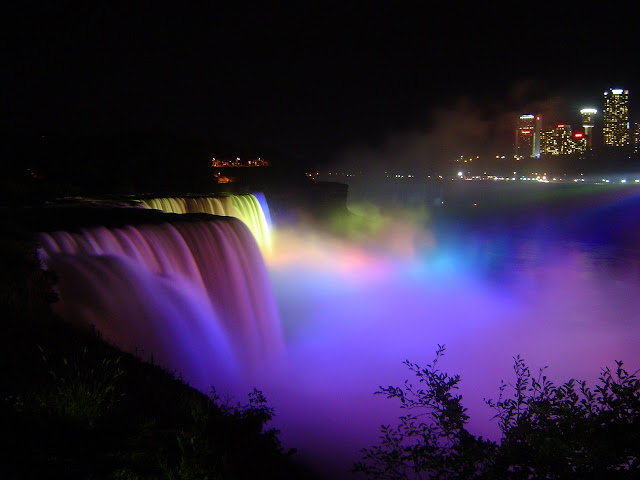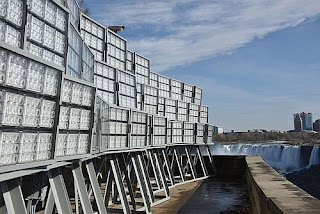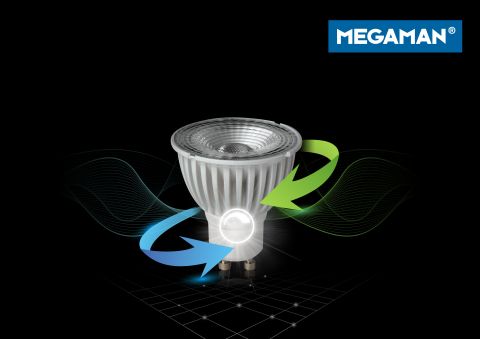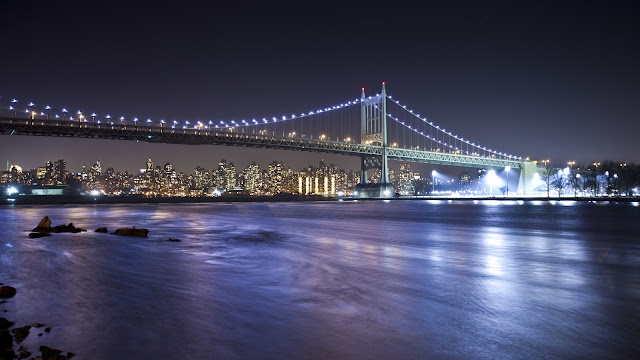Archive for December 2016
While all the sound and fury has been coming from the human-centric lobby, there’s been a quiet revolution going on in the agricultural sector. LED technology has brought massive change to the lighting for horticulture sector and the rearing of livestock. By creating LED systems that offer special spectral outputs, crop and livestock production is enhanced, reducing costs and increasing profits for farmers, while at the same time improving the quality of the product.
Historically, lighting in agriculture was seen purely from a human standpoint. It may be that our light sources left us with little option than to make the best use, or what we perceived as best use, of those sources. Now that we have a ‘tunable’ light source we are able to focus on providing the plants, birds and beasts with the best growing environment.
Horticultural lighting
Research has identified specific wavelengths that are needed to promote growth and fruiting in plants. By applying LED technology it has been possible to create dedicated lighting systems.
For example: chlorophyll absorption occurs in two ranges, 400-500nm and 600-700nm, and that means plants grow most efficiently under blue and red light. It’s worth noting here that plants are seen to be green because they reflect that wavelength. Green light is of no use to the plant at all.
The amount of light required for photosynthesis to take place matters because there is a direct relationship between the two, up to a point. There is a light saturation point where the plant cannot absorb any more chlorophyll, at around 700 micromoles per m2 per second. Any further illumination is a waste of energy (and money).
EXPLAINER: Micromoles
Lighting for plants is measured in micro-moles per second. Micromoles measure the number of photons that pass through a target area; one micromole of light equals a little over 62 quadrillion photons. That sounds very complicated but a new range of spectrometers is now available that provides micromoles per m2 per second readings as simply as they do readings in Lux.
Artificial lighting has been used historically to help extend the ‘growing day’ but we are seeing a move towards total managed environments where artificial lighting provides 100 percent of the illumination in the growing sheds. The LED systems are tuned to provide specific wavelengths according to the growth cycle of the specific plants.
Blue light can stimulate flowers to open up, beginning the plant’s daytime circadian cycle
Red light (and enhanced red light) is good for stem growth and flowering
Infra-red light can mimic the effect of sunset
The ratio between blue and red LEDs is specific to the plant type.
Poultry shed lighting
Getting the light right for poultry breeding is essential, because getting it wrong can be catastrophic for the population of a poultry shed. Stressed fowl become aggressive and it has been known for entire flocks of chickens and turkeys to be destroyed overnight as a consequence of the violence wreaked by the birds.
Research has identified the wavelengths that domestic fowl best respond to and it has been possible to create lighting that mimics the forest under-canopy lighting that birds ‘remember’ in their genetic make-up. This means that domestic fowl have peak sensitivity in the blue-green range, from around 500nm – 700nm, but there is also a substantial response in the UV(A) range – chickens can see ultra violet light that is invisible to humans.
Light at the red end of the spectrum needs to be handled very carefully. Red light promotes sexual activity and growth rate, though it is also thought that the excitation caused by the red wavelength can also be the cause of aggressive behaviour in well-populated sheds.
For the producer, the ideal situation is to create an environment where poultry do not exhibit stressful behaviour, such as over-eating. Layers also need to produce eggs with consistent sizes and ample shell thickness and fowl grown for their meat need sufficient environmental stimulation so that they move around, helping muscle development.
An LED system using specific wavelengths during the course of the day can result in an ideal outcome for the producer. It will produce calm birds that eat less but convert more of that food into body mass, they also come to maturity more quickly in a stress-free state, which means better meat for the customer.
Pig and beef unit lighting
Generally speaking, a lot of research still needs to be done on lighting for pigs and cattle. As we get closer to the human condition, the effect of 100 percent artificial lighting environments suggest that the situation is complicated.
Some of the data is to be expected:
24-hour illumination of pig sheds has reported detrimental effects
24-hour darkness is not an optimal condition
Piglets and weanlings benefit from additional daylight hours, but reproductive behaviour in boars is enhanced by reduced daylight hours. It all sounds very human.
From the point of view of the unit manager, one piece of information is valuable; neither pigs nor cattle appear to have any response to red light. This means that units can be supervised during the night-time by using red lighting – sufficient for security and over-seeing without upsetting the desired circadian rhythms of the beasts themselves.
As research data becomes available, it will be possible to design a lighting regime for pig units and cattle units that is cost-effective for the producer and most beneficial for the beasts themselves.
In summary, as the world’s demand for food increases, producers will need to find the most efficient ways of raising crops and livestock. For those products to have any real nutritional value for the (literal) consumer, then it is beholden on those producers to make sure that growing conditions are optimised for each species. LED lighting is well-placed to deliver the appropriate illumination.
agricultural lighting · horticultural lighting · led agriculture · led lighting · Novel Energy Lighting · poultry lighting · tunable light
15
Niagara Falls unveils spectacular LED lighting upgrade
Comments off · Posted by admin in LED
 Niagara Falls unveils its dazzling new $4 million LED makeover which illuminates the water with a rainbow of colour |

The new system is also installed at the Table Rock Centre and includes 1400 individual LED luminaires supplied by Stanley Electric.
‘The newly enhanced nightly illumination of Niagara Falls will capture the imagination of the millions of visitors, who come to witness the sheer power and beauty that is Niagara,’ stated Mark Thomas, chair of the Niagara Falls Illumination Board. ‘We are very fortunate to have community stakeholders on both sides of the border who have supported our vision and this project from the very start. These enhancements will help us to create an overall guest experience that will continue to shine a positive light on Niagara for people from throughout the world, as reported in LEDs magazine.
The Niagara Falls were previously lit by xenon sources with the light projected from the roof of the Table Rock Centre, and that system had been in place for some 20 years. Salex president Nick Puopolo led the process of retrofitting the system with LED lighting, bringing a proposal to the Niagara Falls Illumination Board along with Ecco Electric and ultimately participating in bringing the idea to fruition. Salex is a lighting and controls sales agency and Ecco is an electrical contractor.
The new system is also installed at the Table Rock Centre and includes 1400 individual LED luminaires supplied by Stanley Electric. The mix of red, green, blue, and white luminaires are grouped into 68 zones of control, 20 for the American Falls and 48 for the Canadian Falls. Salex said the system can deliver more than 18,000 different color combinations.
The SSL retrofit project was intended both to enhance the falls experience for visitors and to deliver the energy efficiency and longevity associated with LED lighting. Salex said the outdoor SSL system delivers light levels that are 4–14 times brighter than the xenon lighting depending on the colors being projected. Moreover, Salex said uniformity was much improved with light now filling gaps in the coverage of the prior system while the new lighting also delivers a “crisper visual image of the waterfalls.’
The LED system reduced energy consumption by 60 percent relative to the xenon lighting. And the consortium of companies behind the project designed it to operate relatively maintenance-free for 25 years.
landmark lighting · led effect lighting · led exterior lighting · led floods · led lighting · Niagara Falls Illumination · niagra falls lighting · Novel Energy Lighting · outdoor led · rgb led
8
New York’s bridges to get multi-million dollar LED facelift
Comments off · Posted by admin in LED

The George Washington Bridge, one of the most famous bridges in New York City, will get an LED overhaul as part of Governor Andrew Cuomo’s plan to revitalise New York’s river crossings.
Nine New York bridges will receive an LED overhaul during the first phase of the $500 million project, ranging from the Henry Hudson Bridge in the Bronx to the Crossbay Veterans Memorial Bridge in the Rockaways.
It is planned that the new lighting schemes will be able to be programmed to salute historic moments, sporting events and national occasions such as the Fourth of July.
This mirrors the Empire State Building and One World Trade Centre which already use their lighting schemes to salute major events, such as the election of a new president on the conclusion of a Super Bowl.
New York’s bridges will join the The Big River Crossing in Memphis, the Leonard P. Zakim–Bunker Hill Bridge in Boston, the Big Four Bridge in Louisville, and the Little Rock Bridges in Little Rock, Arkansaw, to embrace light shows.
It had been previously announced that Philips Lighting would supply interconnected LED-based lighting, and controls technology for the new Tappan Zee Bridge that is currently under construction in New York’s Hudson River Valley, but the new announcement, from New York Governor Andrew Cuomo, marks a significant widening of the project.
Under the Governor’s plan, New York will also redesign tunnel plazas with cutting-edge veils equipped with LED capability, as well as introducing state-of-the-art automatic toll booths.
The New York Crossings Project will include Whitestone Bridge, Throgs Neck Bridge, RFK Triborough Bridge, Queens Midtown Tunnel, Hugh L. Carey Brooklyn Battery Tunnel, Verrazano-Narrows Bridge, Marine Parkway-Gil Hodges Memorial Bridge, and Cross Bay Veterans Memorial Bridge. The coordinated lighting plan will also include the George Washington Bridge, which is operated by the Port Authority of New York and New Jersey.
The NY bridge lighting plan was inspired by earlier New York building projects, which were conceived not only as practical additions to the city, but as public art works, such as the New York State Capitol, Grand Central Terminal, the original Penn Station and the Central Mall Mosaics at Jones Beach.
It is expected that the new LED lighting will use 40 to 80 percent less power and last six times longer than other types of roadway lighting.
Termed ‘The City That Never Sleeps’ the dusk until dawn lighting schedule will illuminate crossings with spectacular, multi-color light shows that will be visible for miles, with the hope of turning New York’s bridges into international tourist attractions with the potential to drive additional tourism revenue. The LED installations are set to begin in January 2017.
The initial phase of London’s own version of the New York bridge project will reach its final stage on Wednesday, when a winner will be announced of the ‘Illuminated River’ design competition, which will see all of London’s major river crossings receive a lighting revamp from the winning design agency. The schemes that are in the running can be seen here.
bridge lighting · led bright · led lighting · Novel Energy Lighting · tapan zee bridge · urban lighting
Streetlights powered by footsteps are unveiled in Las Vegas. PLUS: World’s first live li-fi test takes place at LuxLive. AND: Lux Award winners revealed at a ceremony in London. Lux Today December 6th 2016.
led street lighting · led streetlight · li-fi · lux today · luxlive · Novel Energy Lighting · street lighting
 With the advent of LED lighting, the relationship between legacy dimming technology and LED lamps has become an uneasy one. Here MEGAMAN® shows how to overcome such difficulties.
With the advent of LED lighting, the relationship between legacy dimming technology and LED lamps has become an uneasy one. Here MEGAMAN® shows how to overcome such difficulties.
New for old?
One of the big areas for dimming problems comes when home owners decide to switch out all of their traditional lamps for LEDs, but don’t change the dimmers at the same time. This is largely down to the lack of public knowledge about the fact that trying to combine old and new technologies can lead to all kinds of issues.
The problems that can occur when new and old are combined include: lamp flicker, flashing, an inability to dim as low as required and failures with the LED and/or dimmer. Even if the LED lamps seem to initially respond well to dimming, over time, the use of LED light sources on a legacy dimmer can have longer-term implications that lead to call-backs, weeks or months after installation.
The root of the problem
Almost all legacy dimmers designed for incandescent light sources are leading edge or trailing edge dimmers that commonly use a TRIAC/transistor as the key control device. This chops out parts of the voltage and reduces power to the light source in order to achieve the dimming performance. Though these work with incandescent lamps, LED lamps have an internal filtering circuit that distorts the supply signal and can result in system oscillations that are observed as flickering or flashing.
As well as encountering flickering and variable dimming performance, in extreme cases incompatible dimmer switches cannot be turned on, or suddenly shut off, can burn out, or permanently damage the LED lamps. In addition, traditional dimmers have a minimum load requirement of 40W or 60W, something that causes problems when replacing them with low wattage LED equivalents.
GU10’s – the LED opportunity
With halogen directional reflector lamps being phased out across Europe from September 2016*, there will be an increased push from homeowners for LED replacements. With the advances in LED lighting technology, there are now a wide range of exceptional alternatives to halogen lamps.
However, dimmable LED GU10 lamps are complex pieces of engineering, as they have to house a transformer, as well as dimmable driver components. There are at present a lot of dubious dimmable LED replacement lamps on the market. As with most things, you get what you pay for. So avoid the lower end of the market and choose a trusted LED manufacturer.
MEGAMAN has just launched its new selection of GU10 lamps (that incorporate the company’s new Hybrid Reflector and U-DIM™ technology – see products here). Available in both the popular Economy range and Professional range, these lamps are compatible with the widest possible range of existing dimmers, whether they are leading-edge or trailing-edge.
Overcoming LEDs and Dimming Problems:
Solution One: When keeping the traditional dimmer
For those installers faced with a homeowner who wants to keep their dimmers, wants LEDs and yet doesn’t know what type of dimmer has been installed, a solution is now at hand. MEGAMAN has developed its new U-DIM™ technology, which takes the headache out of switching to dimmable LEDs.
MEGAMAN U-DIM dimmable LEDs are compatible with the widest range of existing dimmers, whether they are leading-edge or trailing-edge dimmers. With the mains voltage halogen reflector lamps being phased out in Europe from 1st September 2016, home owners will need new lamps to operate perfectly with their existing dimmers and this dimming solution is a giant step in that direction. U-DIM LEDs are easy to use and it is possible to ‘plug-and-play’ to upgrade a lighting scheme.
MEGAMAN U-DIM technology is offered as a standard feature on MEGAMAN Dimming LEDs and they offer superior performance and flicker-free dimming from 100% right down to just 5%.
Solution Two: When replacing with new LED dimmers
Dedicated LED dimmers are a good way to overcome many of the traditional dimmer/LEDs issues. This is because they use micro control units to monitor and eliminate waveform noise and distortion, generating a digital signal to the control component that creates a stable and clean chopped waveform. If these dimmers are combined with LED lamps that have been tested and approved for compatibility (this is usually found on the dimming and/or LED lamp manufacturer’s website) – see the MEGAMAN one here as an example, then smooth LED dimming is guaranteed from day one of installation.
Dimming LEDs Checklist:
- Buy dimmable LEDs from a brand you trust
They will have tested a wide variety of dimmers with their lamps and have more comprehensive dimming compatibility lists
- Trailing edge dimmers work best with LEDs
However, if the client doesn’t want to replace their leading edge dimmers, then use LEDs that have been proven to dim well with this technology, such as MEGAMAN U-DIM LEDs
- If in doubt, contact the LED manufacturer
Unsure of whether the dimmer and LEDs are compatible? Check with the manufacturer’s online compatibility list, or contact their team for more advice
*For more information on the halogen ban – visit www.planfortheban.eu
Visit Novel Energy Lighting to buy your Megaman U-DIM GU10 lamps today
dimmable led gu10 · led dimming · led GU10 · LED lamps · megaman gu10 · Megaman LED GU10 · megaman u-dim · Novel Energy Lighting · u-dim




